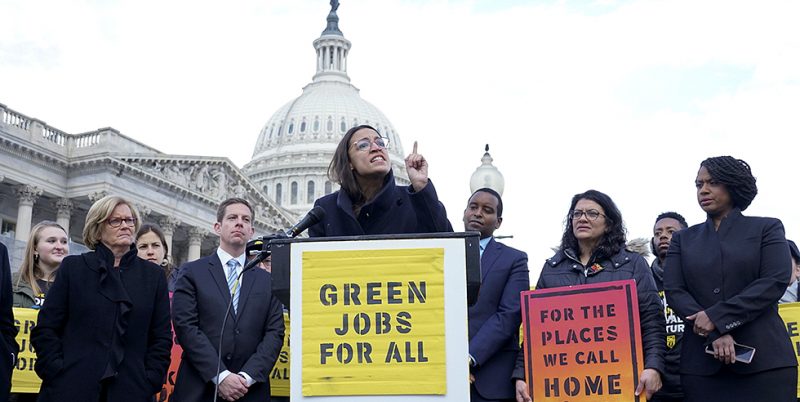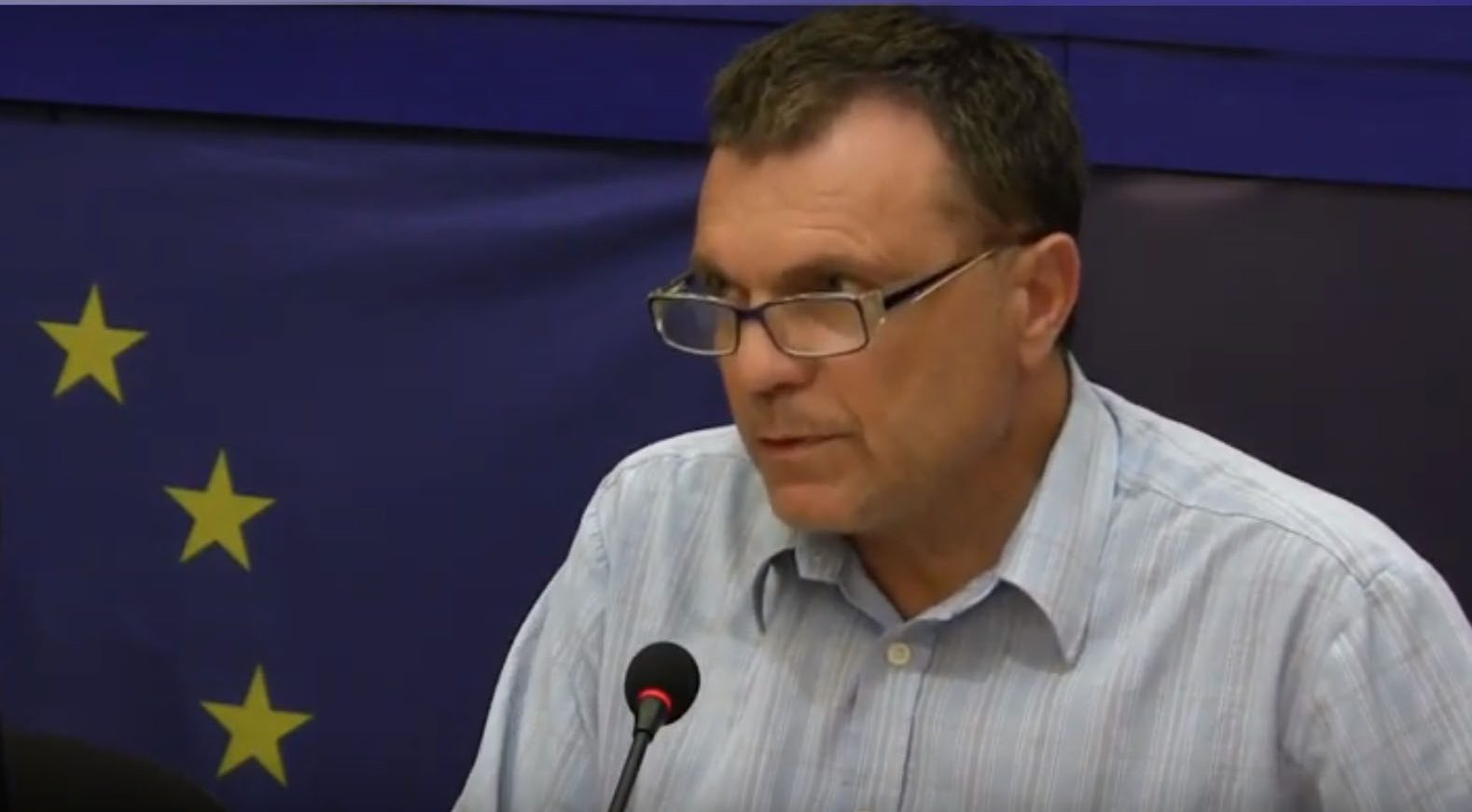Photo: Alexandria Ocasio-Cortez (D-NY) speaks at the House Triangle on November 30, 2018 to show her support for a Green New Deal in next year’s Congress. thehill.com
The article first published in instituteforenergyresearch.org on 04/10/2019.
The Democrats’ latest promise to fuel America’s economy from “100 percent clean, renewable, zero-emission” sources within a decade, while eliminating “systemic injustice,” sounds very much like the perennial Soviet promises that communism was just around the corner. And the communist tenor of these promises is unmistakable. For apart from ridding the world of carbon dioxide emissions, the Green New Deal’s promoters also promise government healthcare, government job guarantees, “green” upgrades to all buildings, and high-speed trains to replace air travel. The only doubts these wild-eyed socialists seem to have is that they are “not sure that we’ll be able to fully get rid of farting cows and airplanes that fast,” as their, in the meantime deleted, FAQ said.
As much as we would like to dismiss these ravings, there are at least two reasons to take them seriously. First, virtually all the announced Democratic candidates running for president in 2020 have endorsed them. Secondly, some of it has already been tried in an advanced Western economy and the results are here for everyone to see. It is these results that prompted the editorial board of the Wall Street Journal recently to declare Germany’s energy policy under Chancellor Angela Merkel “the world’s dumbest.”
Despite the dismal outcome of these policies, most Americans are not aware of the pending green disaster. Indeed, we have been told that we should emulate them and at least some states, such as California, seem to be embarked on exactly the same road to disaster. Thus, it is worth recapitulating what has actually happened in Germany with its own Green New Deal, of sorts.
It all started in 1980 with the founding of the German Green Party, which fervently believed that man was not the solution but the cause of nature’s problems, as detailed in a 1911 proto-Nazi screed by green patron saint Ludwig Klages called “Man and Earth.” The opportunity to act on their beliefs came in the late 1990s when the Greens joined as a coalition partner the government of Social-Democrat Gerhard Schroeder. (Schroeder distinguished himself as a lackey of Vladimir Putin immediately upon leaving the chancellorship.)
In any event, with Green initiative, the German government passed in April 2000 the first renewable energy law (EEG) and feed-in tariff mandating radical subsidies and preferential treatment for renewable energy to be financed by the electricity user. This was the first act of a fundamental energy transition—Energiewende—that was to dramatically lower green gas emissions and increase renewable energy to 80 percent of the total by 2050.
It didn’t work out that way, as could be easily forecast, because renewable energy is intermittent (i.e., unreliable) and there are as yet no economically feasible storage solutions. Nor is increasing the capacity of renewable energy a solution. When the sun doesn’t shine and the wind doesn’t blow, whether you have a renewable capacity of 100 GWh or 1000 makes no difference at all. Your production is zero regardless. In January 2019, with a German announced renewable capacity of 40 percent of needed power, the production was 15.34 percent.
The only thing that has gone up inexorably and dramatically is the cost of electricity paid by the ratepayer and those industries that are not subject to subsidies yet (those that use more than 1 GWh and spend more than 16 percent of income on electricity). With a renewable surcharge of 6.4 Euro cents per kilowatt, the Germans now pay the highest electricity rates of 33 cents per kilowatt in Europe despite countless billions by private households subsidizing wind and solar and an estimated $222 billion of taxpayer money spent by the state to support renewable energy. To add insult to injury, carbon dioxide emissions have not gone down since 2009.
And it is going to get worse. According to the consumer advocacy NAEB, German electricity prices are projected to reach 40 cents per kilowatt, by 2020, which will make them four times those in the US and two times those of France. How German industry could remain competitive at those rates is an unanswered question.
The German experience with Energiewende should serve as a warning to the United States, not a guide.
By Alex Alexiev









